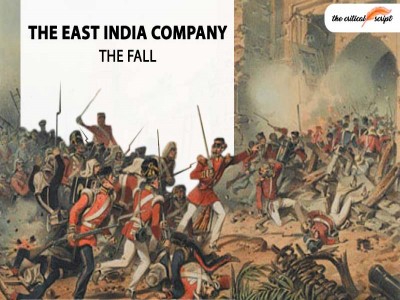
The East India Company: The Rise
Introduction
The East India Company (EIC) was one of the most powerful
and influential trading organizations in history. It was formed on December 31,
1600, through a royal charter issued by Queen Elizabeth I. Initially established
as a private trading company, it later evolved into a colonial power that ruled
vast territories in the Indian subcontinent. Over nearly 250 years, the Company
transformed from a merchant enterprise into an administrative and military
force, laying the foundation for British rule in India.
Formation of the East India Company
During the late 16th century, European nations were engaged
in intense competition for dominance over the lucrative trade routes to Asia.
The spice trade, in particular, was a highly profitable business, with
countries like Portugal, Spain, and the Dutch Republic already establishing
themselves as major players. English merchants, eager to gain a share of this
wealth, sought permission from the monarchy to form a company that would engage
in direct trade with the East.
On December 31, 1600, Queen Elizabeth I granted a royal
charter to a group of London merchants and investors, allowing them to trade
exclusively with the East Indies. The Company was officially named "The
Governor and Company of Merchants of London Trading into the East Indies."
The charter gave the Company the authority to form a monopoly over English
trade in the region, establish trading posts, negotiate treaties, and even wage
war to protect its commercial interests.
The newly formed Company was managed by a Governor and a
Court of Directors, who were elected by its shareholders. Although initially a
private enterprise, the Company's activities were closely linked to the British
government, and its success was seen as a national priority.
Early Voyages and Establishment of Trade
The first fleet of the East India Company set sail in 1601
under the command of Sir James Lancaster. The expedition successfully reached
the East Indies (modern-day Indonesia and Malaysia) and returned to England
with valuable cargo, including spices and textiles. However, the Company soon
faced stiff competition from the Dutch East India Company (VOC), which had
already established a strong presence in the spice trade.
Realizing that direct competition with the Dutch was not
sustainable, the East India Company shifted its focus to India. In 1612, the
Company gained a crucial foothold when Mughal Emperor Jahangir granted it
permission to establish a factory (trading post) in Surat. This agreement
marked the beginning of a long and complex relationship between the Company and
the Indian subcontinent.
Over the next few decades, the Company expanded its presence by establishing trading posts in key locations such as Madras (1639), Bombay (1668), and Calcutta (1690). These settlements, fortified with defensive structures, became the centers of British trade and administration in India.
Transition from Trade to Political Control
By the early 18th century, the East India Company had become
a dominant force in Indian trade, dealing in textiles, spices, tea, and opium.
However, as the Mughal Empire weakened, the Company saw an opportunity to
extend its influence beyond commerce and into governance. The shift from a
trading enterprise to a colonial power was marked by a series of military
conflicts and political maneuvers.
To be continued…
Disclaimer: The opinions expressed in this article are those of the author's. They do not purport to reflect the opinions or views of The Critical Script or its editor.

Newsletter!!!
Subscribe to our weekly Newsletter and stay tuned.

















Related Comments